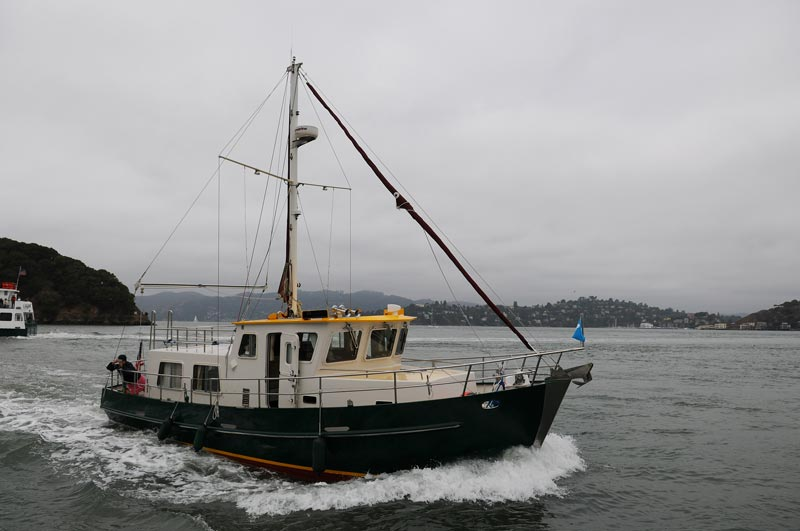Almost all trawlers represented on this forum are overpowered. ......If you want to cruise at 7 knots in your GB 36 you should be looking for a single engine boat. Or a 36 that has 2 50 to 75hp engines.
I think Eric is right on the money with his whole post. If hull speed (or preferably slightly below hull speed) is what you want for maximum economy then one engine in a boat like a GB36 is the way to go. A smaller engine than even the FL120 would make more sense if maximum economy is what's desired.
But as Eric points out, these boats were made at a time when fuel was cheap and buyers wanted the ability to get to their destinations, or their cruising grounds, quickly. More power enabled them to do that, so that's what American Marine/Grand Banks gave them, to the point where at the end of its production run the stock engines in a GB42 were a pair of 400-something hp Cats. The boat will do 15-16 knots all day but the total fuel burn is in the neighborhood of 23 gph.
Even today, with diesel in the $4 per gallon range, I see GBs in the islands running at 12-15 knots. The hulls can do it, so if you have the power and the wallet, why not take advantage of it?
We run our engines in the ideal power range for the FL120 if the goal is maximum engine life. That gives us a cruise speed a bit over hull speed but not much. If our boat had more powerful engines that could take harder running we would cruise our boat two knots faster than we do now, or more if we could get it without over-stressing the engines.
There is a remote possibiliy we may repower our boat in the next year or so. If we do, we will go with engines that are at least 150hp but more likely will be in the 200-250 hp range. This should enable us to cruise at 10-12 knots with a reasonable fuel burn.
That's still way too slow for our taste, but as Eric says, you use what you got.

So if you want a GB or an IG or just about any of the diesel cruisers we're talking about here, a single engine version will get you the best economy if you are willing to creep along at just below hull speed. So 6 knots or so in a GB36. That single-engine GB36 will still be "overpowered" for that kind of cruising but unless you're willing to cough up the bucks for a repower you'll just have to live with the 'too-big" engine the manufacturer put in the boat to begin with.







